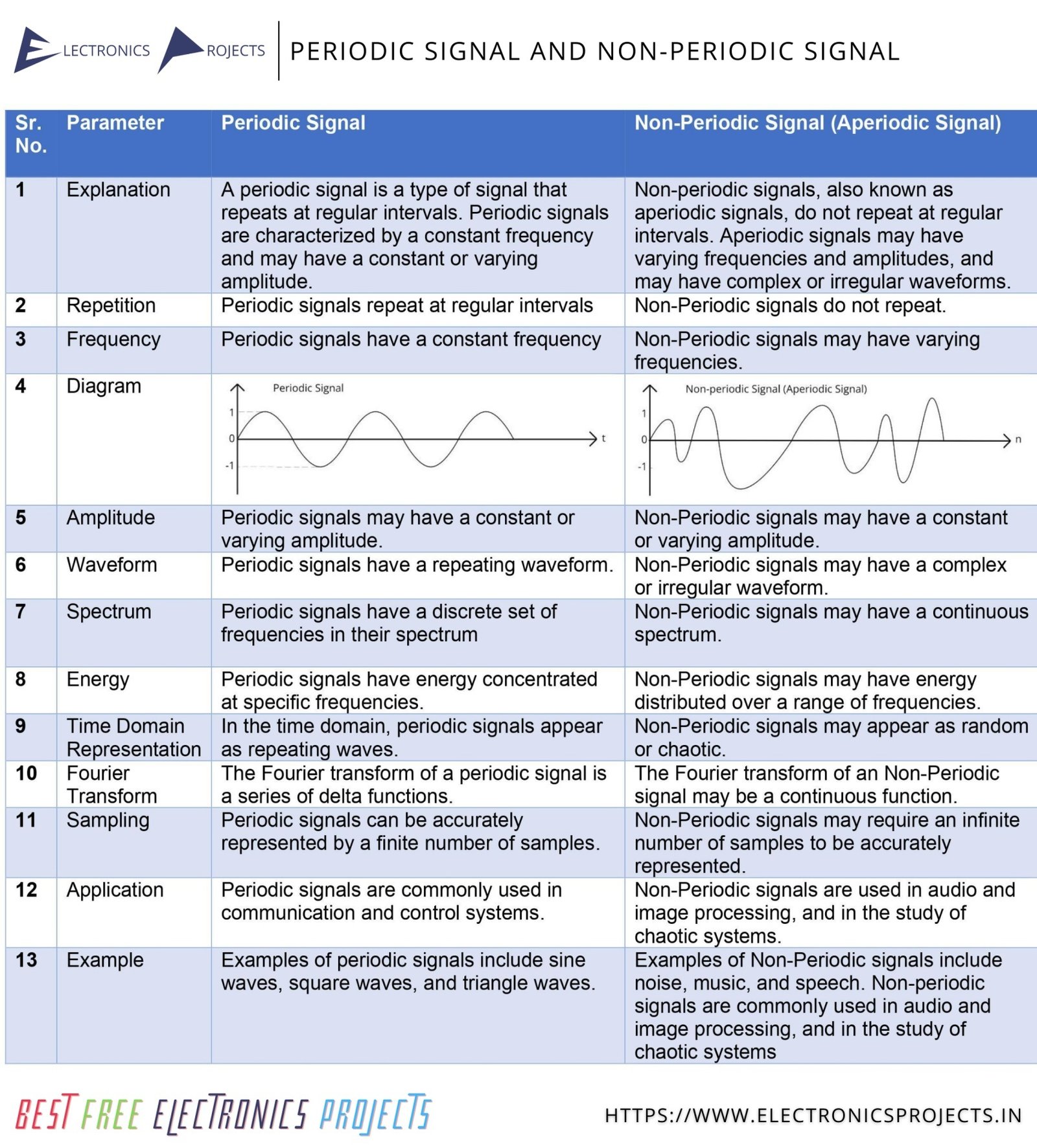What is Periodic Signal?
A periodic signal is a signal that repeats itself at regular intervals of time. A periodic signal can be represented as a sum of sinusoidal functions with frequencies that are integer multiples of the fundamental frequency of the signal. The fundamental frequency of a periodic signal is the lowest frequency present in the signal. Periodic signals are important in many applications because they have a well-defined frequency spectrum and they can be easily analyzed using tools from Fourier analysis.
Periodic signals are characterized by their period, which is the time it takes for the signal to repeat itself, and their frequency, which is the number of cycles the signal goes through in a given time period. The period and the frequency of a periodic signal are inversely related: a signal with a short period has a high frequency, and a signal with a long period has a low frequency. Periodic signals are important in many applications because they have a well-defined frequency spectrum and they can be easily analyzed using tools from Fourier analysis.
What is Non-Periodic Signal?
a non-periodic signal is a signal that does not repeat itself at regular intervals. This means that it does not have a fundamental frequency, and its frequency spectrum is generally not composed of discrete frequencies. Non-periodic signals can be continuous or discrete, and they can be either deterministic or random. Examples of non-periodic signals include white noise, impulses, and arbitrary waveforms. Non-periodic signals are often encountered in real-world applications, such as speech, music, and environmental noise.
Diagram of Periodic and Non-Periodic Signal:

Download above image in HD | Size: 170 KB | JPG Image
Difference between Periodic and Non-Periodic Signal:
Text Version:
| SR. NO. | PARAMETER | PERIODIC SIGNAL | NON-PERIODIC SIGNAL |
|---|---|---|---|
| 1 | Explanation | A periodic signal is a type of signal that repeats at regular intervals. Periodic signals are characterized by a constant frequency and may have a constant or varying amplitude. | Non-periodic signals, also known as aperiodic signals, do not repeat at regular intervals. Aperiodic signals may have varying frequencies and amplitudes, and may have complex or irregular waveforms. |
| 2 | Repetition | Periodic signals repeat at regular intervals. | Non-Periodic signals do not repeat. |
| 3 | Frequency | Periodic signals have a constant frequency. | Non-Periodic signals may have varying frequencies. |
| 4 | Amplitude | Periodic signals may have a constant or varying amplitude. | Non-Periodic signals may have a constant or varying amplitude. |
| 5 | Waveform | Periodic signals have a repeating waveform. | Non-Periodic signals may have a complex or irregular waveform. |
| 6 | Spectrum | Periodic signals have a discrete set of frequencies in their spectrum. | Non-Periodic signals may have a continuous spectrum. |
| 7 | Energy | Periodic signals have energy concentrated at specific frequencies. | Non-Periodic signals may have energy distributed over a range of frequencies. |
| 8 | Time Domain Representation | In the time domain, periodic signals appear as repeating waves. | Non-Periodic signals may appear as random or chaotic. |
| 9 | Fourier Transform | The Fourier transform of a periodic signal is a series of delta functions. | The Fourier transform of an Non-Periodic signal may be a continuous function. |
| 10 | Sampling | Periodic signals can be accurately represented by a finite number of samples. | Non-Periodic signals may require an infinite number of samples to be accurately represented. |
| 11 | Application | Periodic signals are commonly used in communication and control systems. | Non-Periodic signals are used in audio and image processing, and in the study of chaotic systems. |
| 12 | Example | Examples of periodic signals include sine waves, square waves, and triangle waves. | Examples of Non-Periodic signals include noise, music, and speech. Non-periodic signals are commonly used in audio and image processing, and in the study of chaotic systems. |
Image Version:

Download above image in HD | Size: 750 KB | JPG Image
